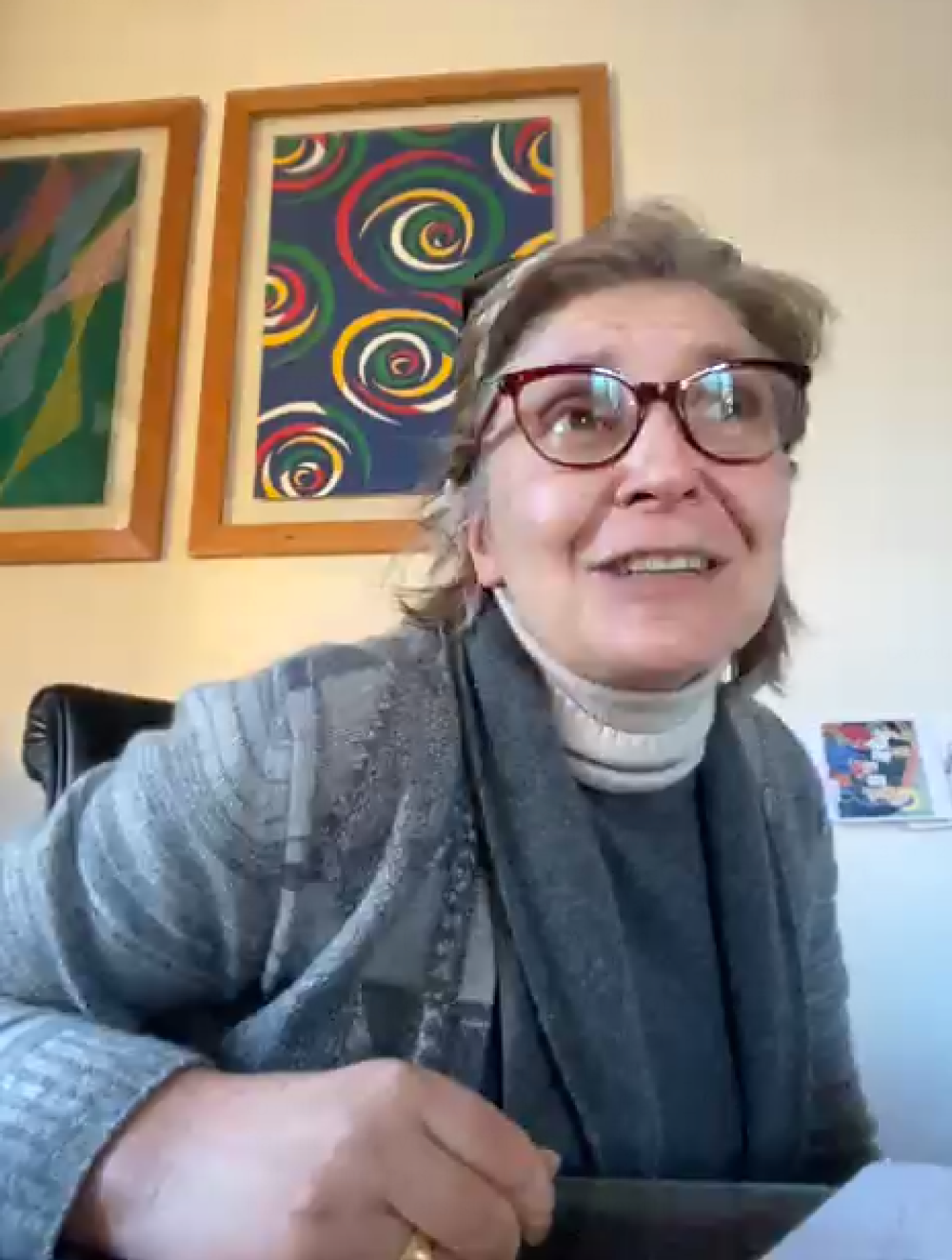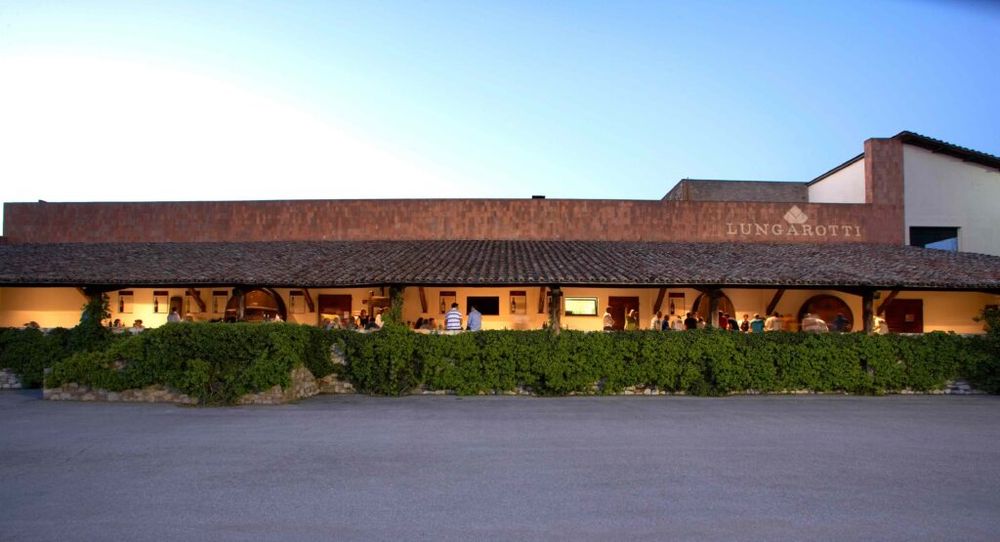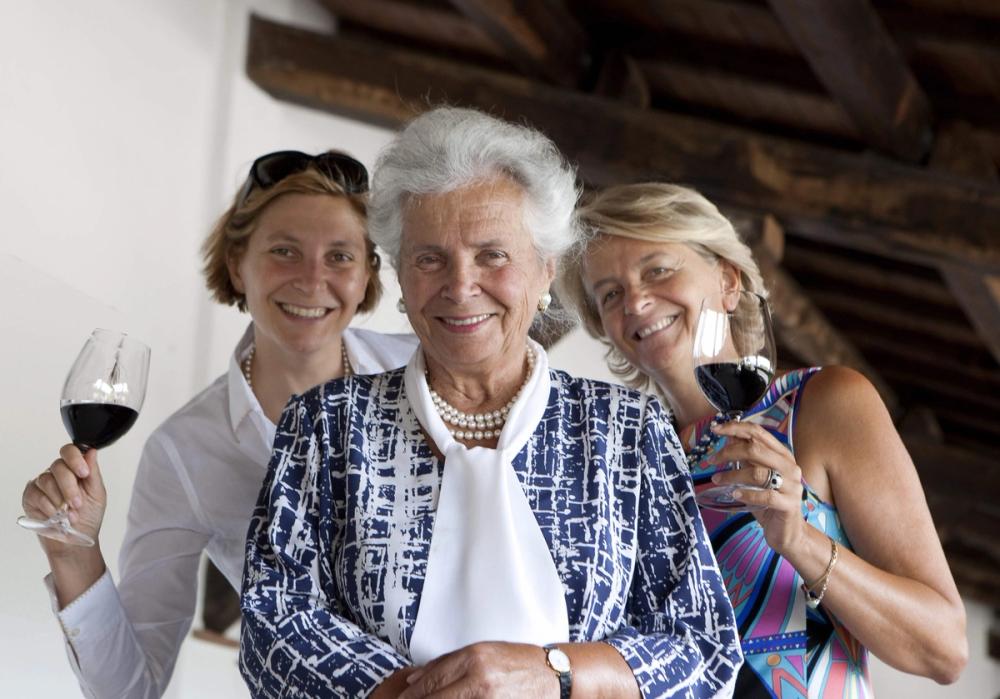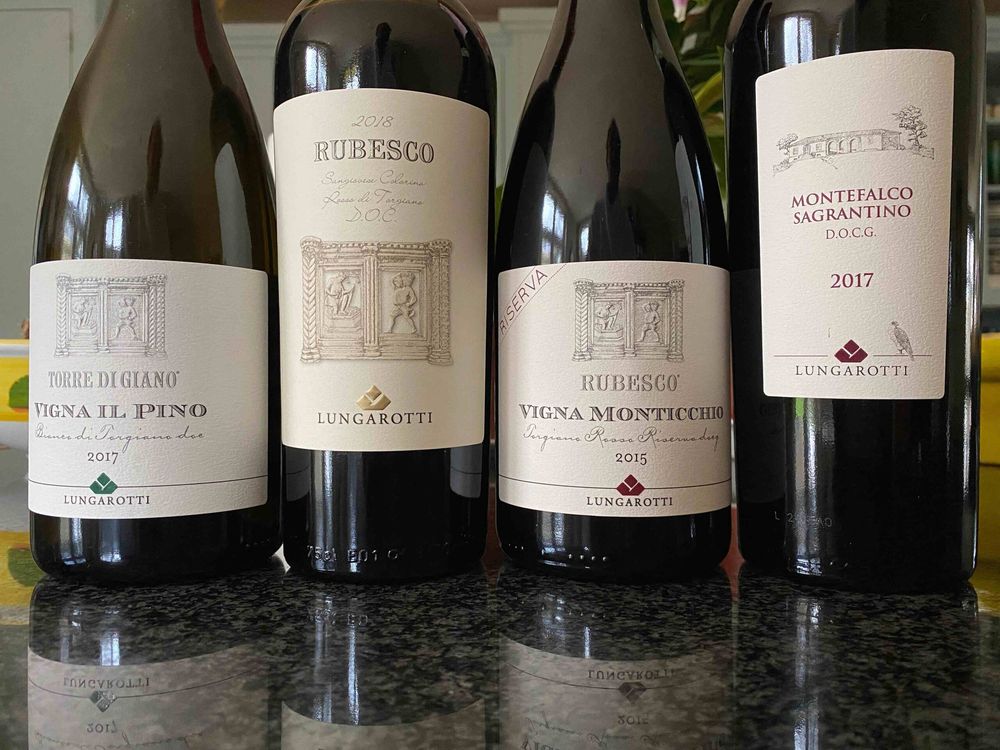“In the last five to ten years, things have changed in Italy. Now, you see very big wine companies run by women,” says Chiara Lungarotti.
Regarded by many as a pioneer of modern Italian winemaking, when Giorgio Lungarotti passed away in 1999, he left the family business to his wife, Maria Grazia, and his two daughters, Chiara and Teresa. Teresa had joined the family estate as a winemaker in 1979 and became one of Italy’s first women oenologists and so it fell to Chiara to lead the Lungarotti Group as CEO. It was a steep learning curve, especially as the youngest person on both the winemakers’ association boards in Italy, and as the only woman on one of them. “I had to listen a lot,” she tells me. “I couldn’t speak – I didn’t have the opportunity to.”
I get the impression that listening came to be her superpower and it is what has made Chiara Lungarotti such an instinctive and intuitive leader. “We have never followed trends,” she says, as we talk about the use of oak in white wines. Their Torre di Giano Vigna il Pino was one of the very first Italian white wines to be partially oak-fermented and oak-aged. “Then people went crazy for oak, but we maintained our subtle style. It’s so important that wine can go with food.”
I meet Chiara over Zoom one evening in March and I see immediately that she is a woman of presence. Relaxed but self-assured, she sits with open body language, both arms out resting on the table. She wears both reading glasses and sunglasses, the latter of which are on her head, holding her hair back like an Alice band. She’s very Italian, with that easy, natural kind of glamour. We’re here together, but apart, to talk about her family winery, Lungarotti, and to taste some of her wines.

Chiara Lungarotti, March 2021
Creating a distinct Umbrian identity
The Lungarotti family winery has been praised for putting Umbria on the map and their Rubesco Vigna Monticchio Torgiano Rosso Riserva DOCG is regularly considered to be one of the best wines in Italy. Post-World War II and living in the shadow of Tuscany, Chiara’s father, Giorgio, began to think about things in a different way and started to place importance on specialisation rather than imitation. The first vintage of Rubesco was released in 1962 and in 1964, Giorgio started selling it to new markets across Europe, including the UK. In the 1970s, Rubesco was one of the few Italian wines released at Oddbins. Step by step, Rubesco hit the shelves all over the world.
Though Umbria gets lumped in with conversations about Tuscany, Chiara is very clear that there is a marked difference between a Tuscan Sangiovese and an Umbrian Sangiovese. Prehistoric soils which used to be beneath a huge lake and the position of the hills make the distinction in terms of terroir and climate. “In your glass, you will find our Umbria land, our soil, our varietals. You will taste wine that speak the territory they come from. That, for me, is essential.”

Lungarotti winery at Torgiano
Owning 250 hectares of Umbrian vineyards, Lungarotti has 29 labels. They began experimenting with international varieties in the 1970s, which was unusual at the time, and in the early 2000s there was more trialling (this time with Vermentino and Grechetto), as the effects of global warming were becoming more and more apparent.
Always forward thinking, Lungarotti were ahead of the curve when it came to sustainability, too. “Sustainability is part of our DNA,” says Chiara. In the 1990s, her father looked at different microclimates to lessen the use of chemical treatments and now 20 hectares of their estate are completely organic. Water sensors in the soil tell them when it’s absolutely necessary to irrigate (and when they do, it’s for white grapes only). When the sun shines, the winery has a system of solar panels on the roof and when it doesn’t, winter-pruning detritus feeds the central heating system.
“We strongly believe that our future depends on the environment,” Chiara says. This is reflected in the changes made to their packaging for the latest vintages of their two flagship wines, Rubesco and Torre di Giano. The new lighter bottle dramatically reduces their carbon footprint to 35% less than it was previously.
Though Lungarotti as a company has moved with the times, I ask Chiara if the style of the wines have changed over the years. “We go through an evolution,” she tells me. “It’s very important for me to maintain an artisanal character, as well as to respect how the winemaker interprets the natural flavours of the grapes. We have a fantastic team and with this team we have followed the life of the vineyard.”

Family first: Maria Grazia Marchetti Lungarotti with daughters Chiara and Teresa (l-r)
Family is the first of five brand values upon which the Lungarotti company is built (the others being Territory, Sustainability, Culture and Hospitality) and everyone is involved in the company, be it in the winery or the wine museum (noted as the best in the world by the New York Times). “What makes the difference is the heart,” says Chiara,“the passion for what you do; the shared passion for the estate.”
For over 20 years now, Lungarotti has been led by a women-strong team: Chiara, Teresa and their mother, Maria Grazia. Today, Chiara is pleased to see plenty of great, skilled women in the wine world. “In the last five to ten years, things have changed in Italy. Now, you see very big wine companies run by women.”
Chiara’s father was instrumental in changing the history of Umbrian wine and now Chiara’s mother, her sister and herself have been key in changing its future.
So how are the new wines tasting?

Torre di Giano Vigna il Pino 2017, Bianco di Torgiano DOC
‘Pino’ refers to the pine trees of the terroir here, the scent of which unmistakably finds its way into the wines.
Vermentino, Trebbiano and Grechetto were harvested in September, but Chiara tells me that 2017 was a very difficult year. After ‘the horrible frost at the end of April’, they experienced the worst drought in 20 years during June to September. They had to work attentively using canopy management to protect the grapes from the sun. It was really important to retain the acidity in the grapes, so no malolactic fermentation was used, but the wine is still beautifully textured and layered, having spent almost three months on lees. Two thirds of the wine was then put in stainless steel and one third in oak. Chiara is an advocate of bottle ageing to help wine gain complexity and this wine has had two years in bottle before being released.
This wine has a fragrant, fruity nose with aromas of white flowers, pine, lime and vanilla. Bright citrus fruits provide some zing on the palate, alongside savoury, herbaceous tones, which stay put for a long-lasting finish. Chiara tells me that this wine is known in Italy for its capacity for ageing: “It gets more honeyed and retains its aliveness.”
Rubesco 2018, Rosso di Torgiano DOC
It was Maria Grazia who came up with the name ‘Rubesco’. Chiara says it means when you “blush for joy”. Now a Lungarotti trademark, this is the wine that put Umbria on the map.
Made with Sangiovese and Colorino, the juice was fermented in stainless steel on the skins for 15 days. The wine was then aged in cask for almost a year, with another year in bottle after that. A structured wine, which is drinkable but firm, it’s a wine that’s made for food. On the nose, it’s concentrated and spicy, with some musky pepper and cloves lying beneath the intense red and black cherry. Acidity and tannins are in perfect harmony and are crying out for Chiara’s favourite pairing, T-bone steak.
On the label there is a picture of the most famous monument in Perugia, the Fontana Maggiore, showing Rubesco’s strong connection to the territory.
Rubesco Vigna Monticchio 2015, Torgiano Rosso Riserva DOCG
This wine is considered to be one of the best Italian reds, a profound expression of Umbria, encapsulating the sweet spot between power and elegance.
Made with 100% Sangiovese from the top hill vineyard, Chiara says that this wine is the result of “extremely curated production”. Not all of the parcels are used every year because quality is crucial and it depends so much on the weather. 80% of the wine has been aged in barrique and 20% in barrel, but this is changing to 50/50 as Chiara prefers the oak to be more subtle. “The reason for cask is not to have an oaky wine. It is for the oxygenation.” The wine is aged in bottle for three years, which Chiara describes as, “rounding all the corners and the sharpness.”
The result is a wine that fills the entire mouth with flavours of cacao, coffee and morello cherry. There’s a touch of liquorice within a bevy of heady spices, such as clove, black pepper and star anise. Soft and robust at the same time, this is a highly accomplished wine that, according to Chiara, is “the taste of Umbria”. Though it is delicious to drink now, it is suitable to age for another 30 to 35 years.
Montefalco Sagrantino 2017, Montefalco Sagrantino DOCG
Chiara describes this wine as “a wild horse that has to be tamed before you ride it”.
She explains that the Sagrantino grape can be very green and years ago the only way to vinify it was to use the passito method. By using canopy management and temperature-controlled fermentation, they can now achieve a dry wine which showcases the rich, ripe fruits, along with a fresh acidity.
This is no doubt a wine of power and intensity, which is felt in texture as well as in flavour. Concentrated, jammy red berries mingle with tobacco, dark chocolate and smoky, baked herbs. The earthy, forest-floor finish makes this wine ideal for game and fleshy mushrooms.


































